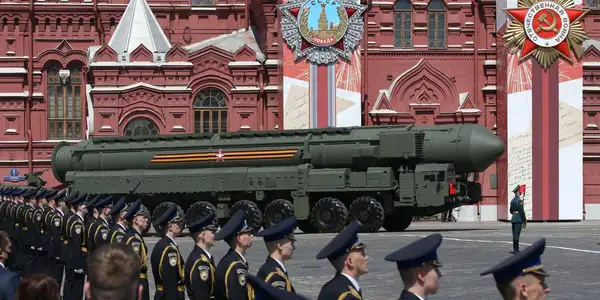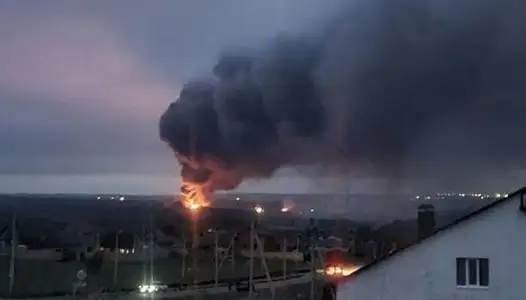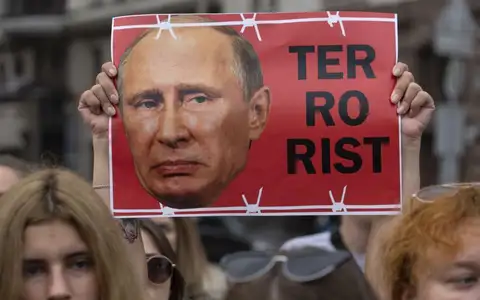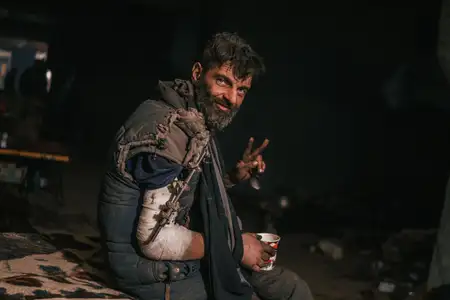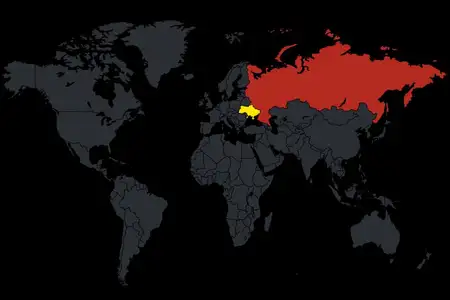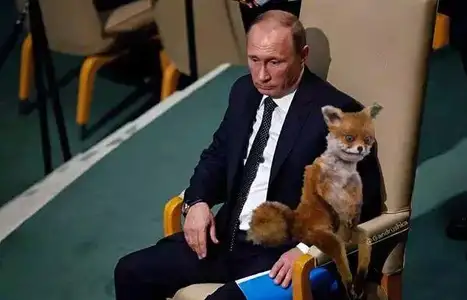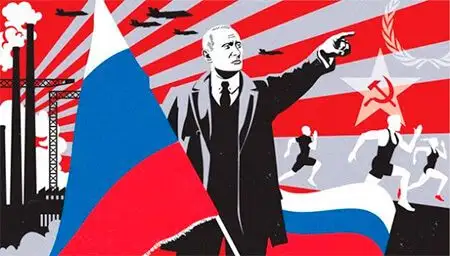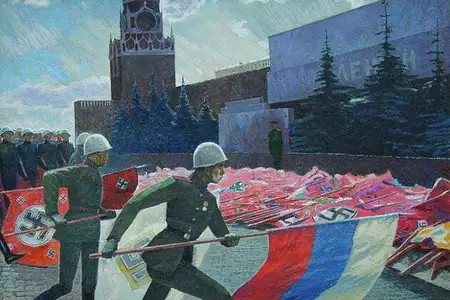Hot Ukrainian autumn: What’s on the fronts?
In August, we talked about beginning of a critical stage of the war. In September, we saw many joyous events on the fronts.
These events confirm: the Ukrainians have finally seized the strategic initiative both in the east and south of Ukraine. It’s time to make a brief review of what is happening on the Ukrainian fronts to better understand the common picture and our prospects.
Let’s remind you that there are five main direction on the Ukrainian fronts: Kharkiv (northeast), Donbas – Luhansk and Donetsk (east), Zaporizhzhia (southeast) and Kherson (south).
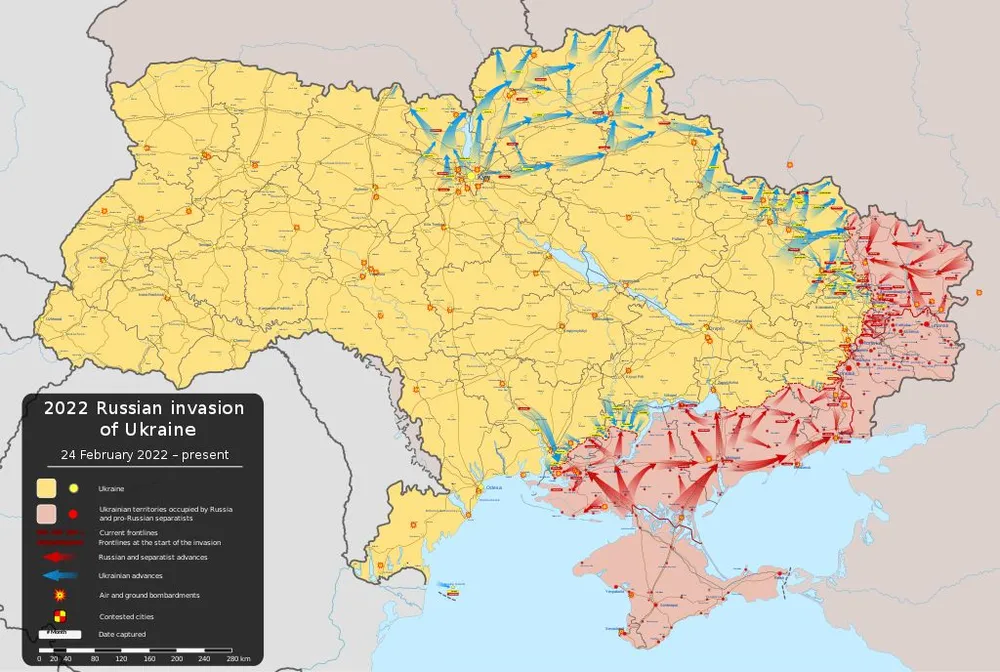
Military situation as of 5 October 2022 (Source)
The Kharkiv operation as the most brilliant operation in modern military history
In early September, the Armed Forces of Ukraine (AFU) demonstrated wonders of both military tactics and strategy.
In July-August, there were a lot of talks about counteroffensive in the Kherson region. Ukrainian President Volodymyr Zelensky emphasized that liberation of the regional center – the city of Kherson – is the main goal of Ukrainian troops. Ukrainian military damaged successful bridges over rivers in this region through which the Russian grouping was supplied.
In the Ukrainian media space, there was so much talk about the Kherson region that the attention of everyone – both Ukrainian society and Russian military – was riveted to it. As a result, the Russian military command focused most of its efforts on the southern sector. At that time, much less attention was paid to Donbas, let alone the Kharkiv region.
But in the first days of September, we realized that this was a brilliant strategic plan of the General Staff of the AFU. Having made the Kharkiv direction a supposedly “safe” one for the Russians (where they did not expect active counteroffensive), the AFU carried out an unexpected and very intense strike here, and not in the Kherson direction!
The results were amazing:
- Practically a panicked flight of most of the Russian troops. In the course of this, many Russian servicemen were taken prisoner, and this is an exchange fund for the subsequent return of our POWs to Ukraine.
- Leaving a huge amount of equipment, weapons, ammunition, which the Ukrainians immediately nicknamed “Russian Lend-Lease”. In this way, Russia became one of the largest military suppliers of Ukraine!
- Liberation of over 450 towns and villages of the region, that is over 8500 sq. km. As of October 05, almost whole Kharkiv region has been liberated (about 5% left occupied, but it won’t last long).
- Opening up opportunities for further advance of the Ukrainian troops.
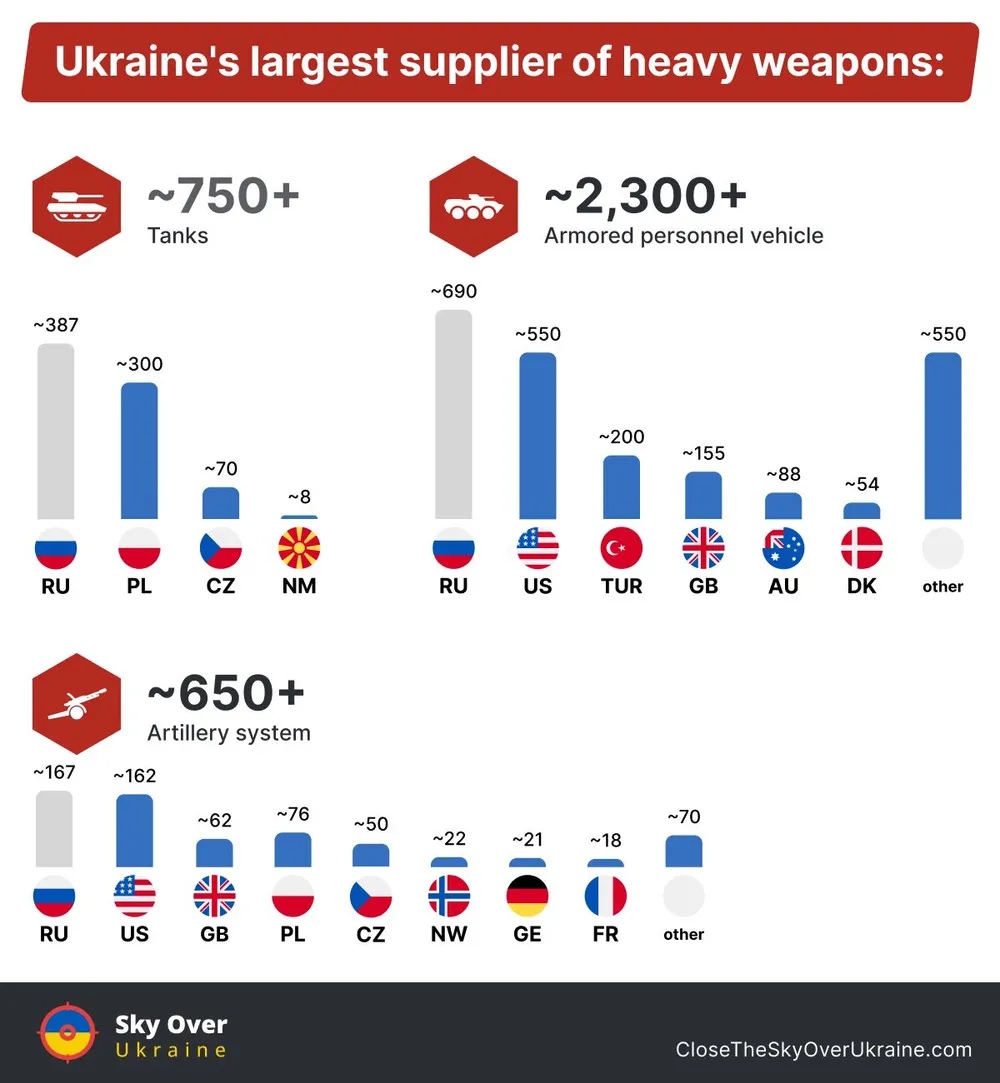
Russia has become one of the largest suppliers of heavy weapons to Ukraine
Experts say that the main factors due to which the Ukrainian military was able to carry out a lightning-fast and successful counteroffensive operation in the Kharkiv direction are: 1) training and professionalism; 2) high motivation of the personnel; and 3) good preparation through strikes against Russian troop positions, munition depots, and command posts, in particular with HIMARS.
The most important towns liberated in the Kharkiv region are Balakliia, Izium, and Kupiansk. In particular, the letter. Kupiansk is a great railway hub which was very important for the Russian army, because it is supplied for the most part by rail. The control over Kupiansk gives the AFU an opportunity to develop further offensive in neighboring Luhansk region.

Volodymyr Zelensky in Izium, Kharkiv region, just after liberation
Will the AFU be able to organize the same successful offensive in the Luhansk region?
Most of the Russian troops withdrew from the Kharkiv region to the Luhansk region which is at the moment almost totally occupied by Russia.
Some Ukrainian experts believe that in the Luhansk region Ukrainian military can repeat the success achieved in the Kharkiv direction. However, for a large-scale counteroffensive it is necessary to create some appropriate conditions in order to start a cascading destruction of the defense of the Russian occupation forces. The main conditions are:
- reduction of the effectiveness of the management system of the advanced units of the occupation forces;
- reduction of the efficiency of their supply.
The scenario may be the same as in the Kharkiv region. The both regions are very similar from the tactical and strategic point of view. There has been a similar logistics system, and the deployment of troops, and the lack of a full-fledged line of defense.
Experts note that the peculiarity of the Russian troops in Ukraine is that they have the potential for offensive actions, but it is insufficient for defense. Obviously, this is due to the fact that the Russians, when invading Ukraine, initially prepared for offensive actions, not counting on the fact that in the future they would have to go on the defense.

Abandoned Russian equipment in Izium
The result is that at the moment, at the Donbas springboard, unites are concentrated that are focused on offensive actions. But in defense – there is a completely different scenario of using this resource. “Right now, they will not be able to use it effectively enough. They will be able only to slow down the advance of the AFU, and not to block it, as it is necessary in defense,” the experts emphasize.
On October 05, the head of the Luhansk Regional Military Administration Serhii Haidai said that de-occupation of the region has officially begun: several settlements have been liberated. According to Russian milbloggers, the Russian army is also preparing to the Ukrainian counteroffensive: there is information that regular troops are now being withdrawn from some localities, for example from the town of Kreminna, – deeper into the Luhansk region. In this way, they hope to prevent another possible surrounding of their troops, as it happened in Lyman.
One more success in the Donetsk region: defeat of the Russian army in Lyman
Meanwhile, Ukrainian military has achieved significant success in the Donetsk region. A large Russian grouping in the town of Lyman was surrounded and after fighting the city was liberated and mopped up on October 02.

Liberation of Lyman, Donetsk region
British intelligence has confirmed the great strategic, political and tactical importance of the liberation of Lyman by the AFU: it allows to regain control over the main transport routes across the Siversky Donets River, behind which Russia has been attempting to consolidate its defenses.
The liberation of Lyman has also important political consequences: the Russian withdrawal has led to a further wave of public criticism of Russia’s military leadership by senior officials. Ironically, the town of Lyman was “part of the Russian Federation” for only a couple of days!
As you know, on September 30, Russian President Vladimir Putin signed decrees about annexation of the seized Ukrainian territories. The actions of the AFU in the Donetsk region demonstrate the Ukrainians’ attitude toward the signed decrees in the best possible way: they are absolutely worthless for us.
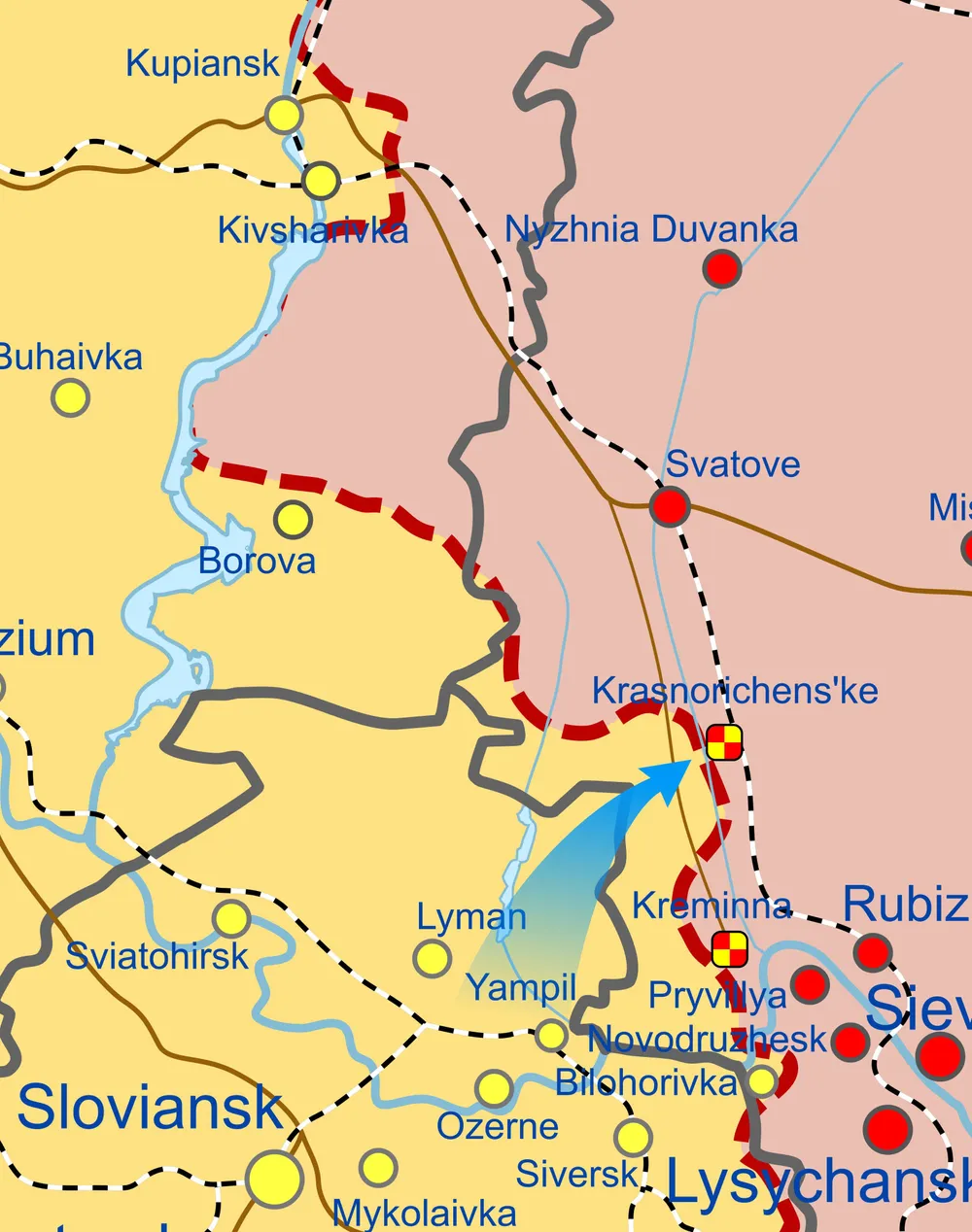
Liberated Lyman on the map, as of October 03 (Source)
So, how the AFU managed to surround Russians in Lyman?
At the beginning of the AFU counteroffensive there were only two ways for Russian occupants to escape. But Ukrainian Armed Forces very quickly took these routes under fire control. In addition, the withdrawal of Russian troops was impossible due to the previous de-occupation of the territories by the Ukrainians. Therefore, the Russians were surrounded.
This situation, when there is no way back and no possibility to supply reinforcements, has very important conditions for an effective counteroffensive.
During all these operations, the AFU have been gaining unique combat experience which can (and surely will) be used in the further operations.
Moreover, analysts at the American Institute for the Study of War (ISW) emphasize that the defeat around Lyman also indicates that Putin – who has reportedly been micromanaging Russian commanders on the ground – is deprioritizing defending the Luhansk region in favor of holding occupied territories in southern Ukraine.
The “creeping” Ukrainian offensive in the south: Zaporizhzhia and Kherson
So why is Ukrainian south more important for Putin than the east now? The thing is that these two regions – Zaporizhzhia and Kherson – include keys to one of the main goals of Putin’s “special military operation”: creating and maintaining a land corridor to occupied Crimea.
The largest NNP which supplies the whole southeast of Ukraine is situated in the Zaporizhzhia region. And the main part of the North Crimean Canal which is essential for the water supply of Crimea is situated in the Kherson region. Moreover, the city of Kherson is the only regional center seized by the Russian troops since the beginning of the large-scale invasion. Its loss would be a very painful blow for Putin politically.
The situation in the Kherson region, is indeed very interesting. There has not been any intensive counteroffensive here: the tactics and strategy are completely different than in the east. The AFU liberated the region slowly, but confidently. However, in the recent days the counteroffensive operations here intensified significantly.

Kherson region, right bank of the Dnipro River, as of October 05 (Source)
At the same time, for months, the AFU has been “luring” Russian troops there. As a result, a very large grouping of Russian troops was formed on the right bank of the Dnipro River in the Kherson region, which may soon be completely cut off from supplies. If the AFU succeeds, there will be another “Lyman”, only on a much larger scale.
According to experts, the tactic of gradual depletion of the Russian grouping on the right bank is already bearing fruit. The AFU are gradually and very systematically destroying their command posts. In particular, in the night of October 03, their command posts, communication systems and means, radar stations, and, of course, air defense means were also destroyed. Due to this, certain discoordination was introduced in the Russian units. Thus, Ukrainians have successfully advanced their forces in this direction.
Through liberation of more and more settlements on the right river bank, the AFU is gradually narrowing the ring around the Russian grouping. In recent days the Armed Forces of Ukraine have de-occupied seven settlements here. In general, more than 50 settlements in the region have been liberated from the occupiers.
The second successful direction of the AFU is the advance along the administrative borders of the Mykolaiv region. The military localized the threat of seizing Mykolaiv and advancing to Odesa, experts say.

Liberated village of Petropavlivka, Kherson region
It is worth noting that Ukrainian military officials mostly maintained their operational silence regarding the progress of Ukrainian troops in the Kherson region. But the news on the advance of the AFU become quickly known due to Russian social networks and milbloggers.
Meanwhile, according to ISW, Ukrainian successes in the Kherson region are triggering the already vulnerable Russian information space. Russian occupation officials are increasingly blaming NATO intelligence for exposing weaknesses in Russian defenses in the Kherson region and are calling for Russian forces to prepare for urban battles and develop new defensive positions.
On the whole, ISW assumes that the AFU may liberate most of the Kherson region in the coming weeks. All these facts show that Ukrainian counteroffensive in the south goes according to plan.
And what about Moscow?
Although the Russian media and officials desperately insist that everything is going according to plan, too, it looks quite different. Unable to counter anything impressive on the fronts, Putin resorts to his favorite method: intimidating the Ukrainians and the world.
While no one in the civilized world took seriously the annexation of the occupied territories to Russia, Putin keeps trying to use the old means:
- Shelling of Ukrainian cities
In the recent week, Russian shelling of Ukrainian settlements, civil objects and civilians has resumed. Almost every night there are attacks on Kharkiv, Dnipro, Mykolaiv, Odesa, Zaporizhzhia etc., almost every day we have dead and injured civil people – dozens pro week.
Particularly cynical and brutal are the firings of convoys of civil vehicles trying to evacuate from dangerous areas. At least 31 people died and 88 were injured as a result of a shelling near Zaporizhzhia on September 30. On October 1, it became known about a shelled evacuation convoy near Kupiansk in the Kharkiv region in which people tried to evacuate towards Ukraine: the death toll is 24 people, including 13 children and one pregnant woman; only 5-7 people survived.
The war criminal Putin continues to intimidate the Ukrainians and pressure the Ukrainian leadership to squeeze out the possibility of negotiations. This strategy will not work.

Remains of the civilian convoy shelled by Russians in the Kharkiv region
- Mobilization
It seems that Putin scared the Russians more than the Ukrainians with his mobilization. As of October 04, Shoigu said that the number of mobilized people is already more than 200,000. According to him, training of those drafted allegedly continues at 80 training ranges and six training centers. Shoigu also stated that those mobilized will be sent to the “special operation” zone after “joint combat training” together with the already involved units. However, there is numerous evidence that just mobilized people already come to Ukrainian battlefields.
Meanwhile, Ukrainian experts believe that it must take at least two months for the mobilized to reach such a degree of training as to pose a threat to the AFU. And during these two months, the situation on the fronts may change even more significantly.
- Nuclear threat
The only thing left to scare Ukraine and the whole world is Putin’s notorious nuclear weapon. During the illegal annexation of Ukrainian territories, he made it clear that Russia was prepared to use any means to defend them, of course, hinting at nuclear weapons.
The reaction of the West is clear, at least that of the United States. US Defense Secretary Lloyd Austin called Putin’s threat “nuclear rattling” and condemned it, but said he did not believe that the Russian president has decided to use nuclear weapons. Experts assure that the United States will almost certainly find out in advance whether Russia is preparing a nuclear strike on Ukraine.
What’s next?
Our conclusion is the same as in our previous articles: If the support of the Western partners remains on the same level and becomes even more intensive, the AFU have all the chances to consolidate success and only develop it further.

The US lend lease which is about to start to come to Ukraine, will not change the course of the war. It has been already changed! The lend lease will only strengthen the positions of the Ukrainian troops and accelerate their advance, Ukrainian experts believe.
It has long been clear that the outcome of the war in Ukraine will be decided on the battlefield. The decisive phase has already started. And now more than ever, Ukrainians need as much support from the world as possible in this brutal struggle for democratic values and civilizational ideals.
Anastasiya Glotova


















